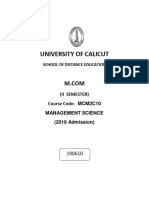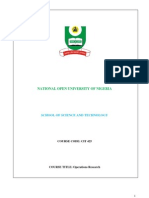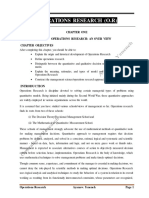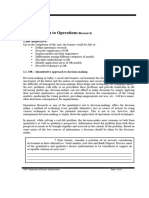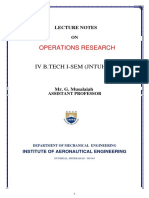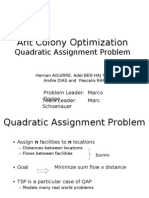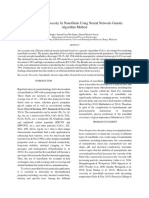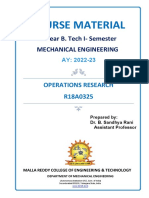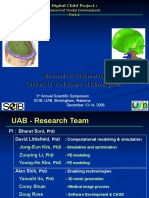0% found this document useful (0 votes)
75 views11 pagesQT For MBA Notes (Unit - I)
Operations Research (OR) is an interdisciplinary field that combines tools from various disciplines to aid in decision-making, particularly in resource allocation. It originated in the UK before World War II, focusing on military operations, and has since expanded into various business applications. Key OR techniques include linear programming, game theory, and simulation, which are used to solve complex problems across multiple sectors such as finance, manufacturing, and human resources.
Uploaded by
ਦੀਪਾਂਸ਼ੂ ਤਿਆਗੀCopyright
© © All Rights Reserved
We take content rights seriously. If you suspect this is your content, claim it here.
Available Formats
Download as DOCX, PDF, TXT or read online on Scribd
0% found this document useful (0 votes)
75 views11 pagesQT For MBA Notes (Unit - I)
Operations Research (OR) is an interdisciplinary field that combines tools from various disciplines to aid in decision-making, particularly in resource allocation. It originated in the UK before World War II, focusing on military operations, and has since expanded into various business applications. Key OR techniques include linear programming, game theory, and simulation, which are used to solve complex problems across multiple sectors such as finance, manufacturing, and human resources.
Uploaded by
ਦੀਪਾਂਸ਼ੂ ਤਿਆਗੀCopyright
© © All Rights Reserved
We take content rights seriously. If you suspect this is your content, claim it here.
Available Formats
Download as DOCX, PDF, TXT or read online on Scribd
/ 11



















